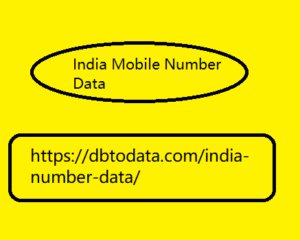Post by account_disabled on Mar 10, 2024 1:28:45 GMT -6
Over the last year, the idea has spread that social media is dying and needs a makeover. The cause of everything would be their centralized nature which would not give users control over the data (identity) and content produced. The proposed solution would be decentralization. A decentralized network is a network that does not depend on servers owned by a single company. But this decentralization , in reality, can take at least two forms depending on the protocols used for its design: federated networks and peer to peer networks. Federated Networks Social media as we know it operates on a centralized client-server structure. This means that every interaction we make, when we upload a photo or leave a comment, is processed by the server of the company that owns the service.
Federated networks also use a client-server structure, but here the servers are India Mobile Number Data managed by users who, thanks to specific protocols, are able to communicate and amplify their range of action. Something similar happens with mail servers that communicate thanks to standard protocols (IMAP, POP3, SMTP) which allow us to exchange emails with recipients who use different mail services, as long as their address is known. The most used federated protocols are: Matrix is a protocol designed for chats, developed by the company New Vector. It currently has over 11 million users who are able to use different clients to chat with each other, including Element, Cinny, FluffyChat. ActivityPub is a federated protocol that enables a series of typical social media functions through APIs. Each server that implements this protocol will be able to communicate with other nodes on the network. Below are some of the most used social media based on ActivityPub.

Federated Social Media Mastodon is an asymmetric social network that has an interface and functions very similar to Twitter. It is the most popular project in the Fediverse, with over 7,000,000 registered users. I talked about it in detail in this post. Diaspora is the oldest decentralized social network. It was launched in 2010 as the anti-Facebook, but its users are just over 400,000. The servers on which it relies are called "pods". On Diaspora the user can organize his contacts into groups and choose who to send messages to. PeerTube is a decentralized alternative to YouTube. It is used to share online videos between federated networks. It has no visibility algorithms or advertising. It has just over 387,000 registered users. Pixelfed is a decentralized alternative to Instagram. It has a chronological feed, without algorithms. It also has a set of filters that can be applied to photos. It has no advertising.
Federated networks also use a client-server structure, but here the servers are India Mobile Number Data managed by users who, thanks to specific protocols, are able to communicate and amplify their range of action. Something similar happens with mail servers that communicate thanks to standard protocols (IMAP, POP3, SMTP) which allow us to exchange emails with recipients who use different mail services, as long as their address is known. The most used federated protocols are: Matrix is a protocol designed for chats, developed by the company New Vector. It currently has over 11 million users who are able to use different clients to chat with each other, including Element, Cinny, FluffyChat. ActivityPub is a federated protocol that enables a series of typical social media functions through APIs. Each server that implements this protocol will be able to communicate with other nodes on the network. Below are some of the most used social media based on ActivityPub.

Federated Social Media Mastodon is an asymmetric social network that has an interface and functions very similar to Twitter. It is the most popular project in the Fediverse, with over 7,000,000 registered users. I talked about it in detail in this post. Diaspora is the oldest decentralized social network. It was launched in 2010 as the anti-Facebook, but its users are just over 400,000. The servers on which it relies are called "pods". On Diaspora the user can organize his contacts into groups and choose who to send messages to. PeerTube is a decentralized alternative to YouTube. It is used to share online videos between federated networks. It has no visibility algorithms or advertising. It has just over 387,000 registered users. Pixelfed is a decentralized alternative to Instagram. It has a chronological feed, without algorithms. It also has a set of filters that can be applied to photos. It has no advertising.
